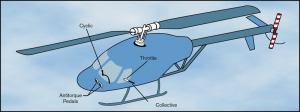According to safety experts, airplanes are one of the safer modes of travel – especially if you travel on large commercial planes. Over the past decade, there have been about 773 global fatalities from plane crashes annually, on average. This means that far more people are sustaining serious and fatal injuries from car accidents in Homestead and other communities rather than planes. This is because the FAA and other authorities have made a number of important safety changes over the years:
1) Safety changes meant to prevent burn injuries and fires. In larger aircraft, cabin safety requirements mandate flame-resistant insulation, fire-retardant panels, and fire-retardant seat cushions. This reduces the chance of a fire and prevent flash fires, giving passengers more time to escape without serious burn injuries.
2) Stronger plane components. Planes are built stronger since 2009. Since that year, seats in larger airplanes must withstand at least 16 times the force of gravity.
3) Easier escape routes. Airplanes carrying more than 60 passengers are required to have wider passageways to allow passengers to leave faster in an emergency. In most larger commercial planes, exit routes must be illuminated by floor lighting. This has been shown to help passengers leave the plane faster, even during nighttime flights or when smoke is present.
Despite these safety changes, aviation accidents in Homestead and other communities can still happen – and experts claim that more can be done to prevent airplane-related injuries. For example, there have been many attempts to introduce more restraint systems, including should-harness style seatbelts similar to car seat belts.
Another change that many experts are aiming for are changes to pilot training. The FAA is expected to make some important pilot training changes this autumn, possibly to increase the amount of training that pilots will need to have. Co-pilots on passenger-commercial flights may also be required to get the same licensing as pilots.
The FAA is also addressing pilot fatigue. While it is known that fatigue leads to car and truck collisions in Homestead and other communities, research has also shown that fatigued pilots are a risk in the skies. In 2009, a crash in New York state led to 50 fatalities, for example. That crash was connected with pilot fatigue. Starting early next year, the FAA will require pilots to get a 30 hour continuous break every week as well as a ten hour break before duty.
Unfortunately, even with these changes some experts say that more needs to be done to prevent airplane accidents. One issue with airline safety is that different rules apply to passenger commercial flights, cargo flights, small personal planes, and other types of aircraft. Authorities agree that more needs to be done to prevent accidents affecting all types of aircraft.
Continue reading →
 Florida Injury Lawyer Blog
Florida Injury Lawyer Blog



